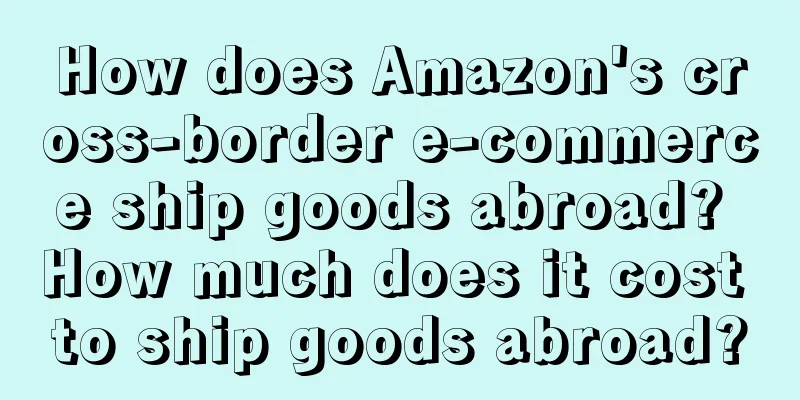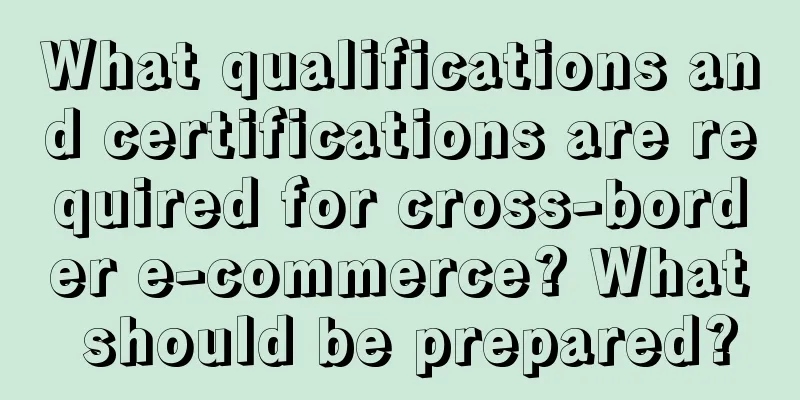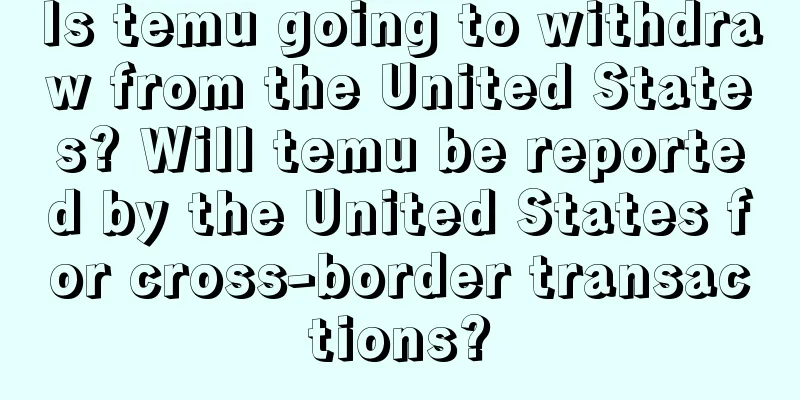How does Amazon's cross-border e-commerce ship goods abroad? How much does it cost to ship goods abroad?

|
More and more sellers are turning their attention to cross-border e-commerce, with Amazon being the most representative. So, how sellers can smoothly ship goods abroad has become an important issue. Next, let's take a look at Amazon's cross-border e-commerce shipping methods. 1. How does Amazon cross-border e-commerce ship goods abroad? 1. Amazon Global Delivery (FBA): Amazon provides a global logistics solution called Fulfillment by Amazon (FBA). Sellers send goods to Amazon's designated international delivery centers, and then Amazon is responsible for storage, packaging and delivery to countries around the world, which can reduce sellers' logistics risks and costs. 2. Fulfillment by Merchant (FBM): In addition to using FBA services, sellers can also choose Fulfillment by Merchant (FBM). Through FBM, sellers handle the logistics and delivery of orders by themselves, and can choose suitable express companies for international transportation. 3. Third-party logistics cooperation: In addition to the above two methods, sellers can also choose to cooperate with third-party logistics and use their global logistics network and professional services to ship goods abroad. In this way, you can choose the most suitable logistics solution and service provider according to your specific needs. 2. How much does it cost to ship goods abroad through cross-border e-commerce? 1. Freight: Cross-border e-commerce needs to pay a certain amount of freight when shipping goods abroad. The specific cost depends on factors such as the weight, size, destination country and selected logistics service of the goods. Sellers can obtain accurate quotation information by querying the corresponding freight calculation tool or consulting the logistics company. 2. Tariffs and taxes: In the process of cross-border e-commerce delivery, sellers also need to consider the issue of tariffs and taxes. Different countries impose different tariffs and taxes on imported goods. Sellers need to understand the relevant regulations of the destination country and be prepared before delivery. 3. Other costs: In addition to shipping and tariffs, sellers also need to consider other possible costs, such as packaging material fees, insurance premiums, etc. These costs will also affect the shipping cost and need to be considered when setting the selling price. Amazon's cross-border e-commerce delivery methods mainly include Amazon Global Delivery (FBA), Merchant Fulfillment (FBM) and third-party logistics cooperation. Sellers can choose the most suitable delivery method according to their own situation and consider freight, tariffs and other possible fees. |
>>: How to register in Wildberries China? What information is required?
Recommend
The whole story of the Oriental Selection Essay Incident! And the top ten problems are dismantled
This article reviews the "Essay" inciden...
Brand No. 1: Product power, brand power, and reach, three forces in one
This article analyzes the difficulties of brand ma...
Before launching new products, go to Xiaohongshu first
In this rapidly changing market environment, launc...
Without public domain, you can’t grow big; without private domain, you can’t be stable
This is an era of omni-domain marketing. The value...
When is Shopee's preferred seller selected? How to become a preferred seller?
Merchants on the Shopee platform all want to obtai...
How to transfer warehouses on Amazon? How to calculate the transfer fee?
When running an Amazon store, if there is too much...
HEYTEA FENDI co-branded drinks are being snapped up: Mini Program crashes multiple times, scalpers double the price
HEYTEA has partnered with luxury brand Fendi to la...
Douyin Supermarket is launched, will it “disrupt” local life?
Following JD Supermarket and Tmall Supermarket, Do...
What should I do if Shopify cannot be accessed? What is the reason?
There are still many merchants doing cross-border ...
What are the types of Amazon keywords? How to find core keywords?
On the Amazon platform, merchants generally need t...
How to promote Wish? What should I pay attention to when promoting?
As the world's leading mobile e-commerce platf...
2023, 10 predictions for the video account ecosystem
The collision between the video account and the We...
A Preliminary Study on the Application of ChatGPT in Content Operation
The author of this article discusses the specific ...
Which logistics model should eBay mainly adopt? What is eBay's logistics model?
With the rapid development of e-commerce, more and...
Why does marketing to women always fail?
The discussion about feminism has become increasin...









